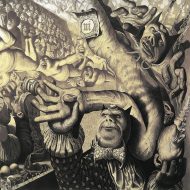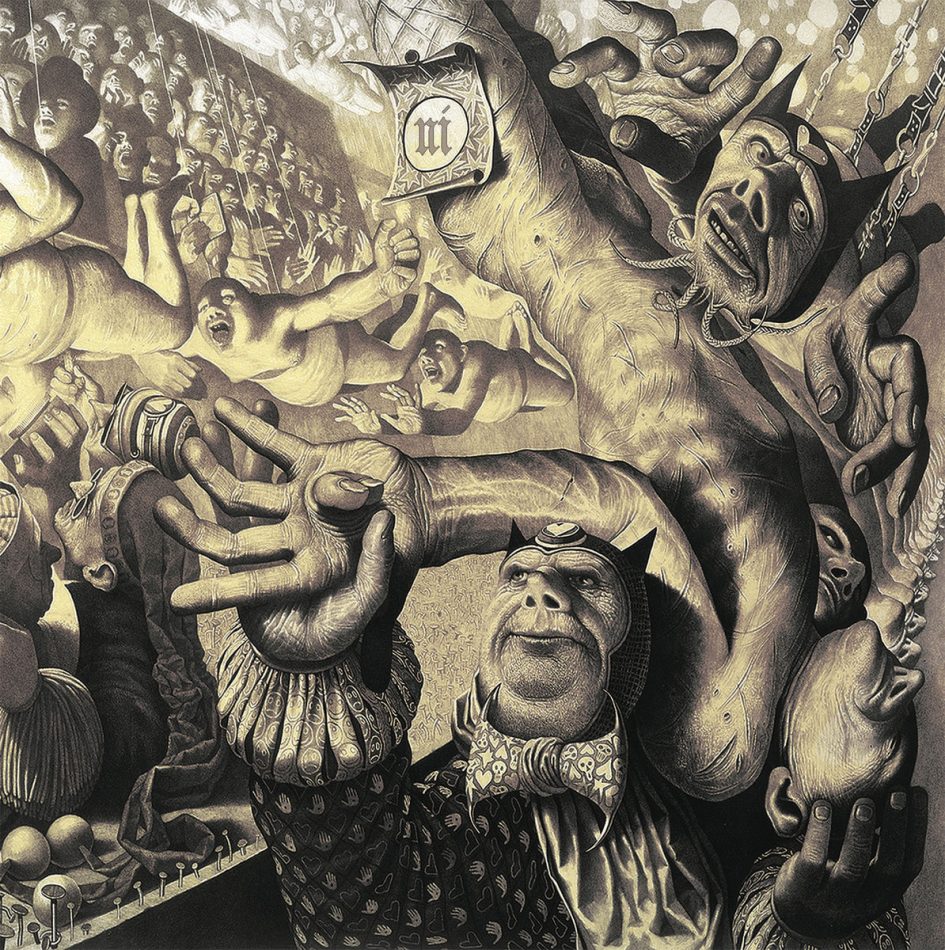 Phobias are clearly an issue with French band Ni. All eleven tracks are suffixed with different ones – catagelophobie, héliophobie, stasophobie to name but three. But what’s in a track title? Everything points to a fluid approach to creativity, and I particularly liked the descriptive line “it is always like a squall: children run in all directions and parents dance round the bonfire”. Ni, whose first album this is after a couple of EPs, are in fact largely an instrumental band apart from some distant manic megaphonic cries and screams I wasn’t surprised to see the name Igorrr associated with them.
Phobias are clearly an issue with French band Ni. All eleven tracks are suffixed with different ones – catagelophobie, héliophobie, stasophobie to name but three. But what’s in a track title? Everything points to a fluid approach to creativity, and I particularly liked the descriptive line “it is always like a squall: children run in all directions and parents dance round the bonfire”. Ni, whose first album this is after a couple of EPs, are in fact largely an instrumental band apart from some distant manic megaphonic cries and screams I wasn’t surprised to see the name Igorrr associated with them.
After 15 seconds of nothing, random sounds can be heard. These sounds are disturbing, disjointed and deliberately discordant. It’s experimental, at least for a couple of minutes when “Héliophobie” breaks into a slightly more regular but always sinister heavy pattern. There’s an element of film score about this, but it’s a very dark film. The anarchy of the playing recalls Ephel Duath to a degree. The same jazzy blackness introduces “Alektorophobie”. It stops and starts. The vocalist screams indistinctly in hardcore fashion. “Lachanophobie” is more moody, as if passing through space. A guitar chord brings an element of menace. As ever it turns into an avant-garde, irregular adventure. I grew to like this weirdness. The discordance sounds like a mechanical process. It all falls to bits at the end, deliberately so.
After more excitement from “Leucosélophobie”, “Catagelophobie” is a mix of frantic jazz and screams. The children are running in all directions. Mid way the clouds darken and thicken and after presaging doom, there’s a wonderful twisty rhythm to delight us. At times I think that Ephel Duath’s Davide Tiso must be the twin brother one of Ni, such are the sinister and twisted soundscapes but I’m not complaining. In fact there is a haunting aura about “Athazagoraphobie”, which cleverly mixes quiet with explosiveness. As ever there’s bassy depth. And then it takes off and our blood flows once more before messing with our brains. “Kakorraphiophobie” starts in customary cacophonic style, before somehow pulling all the bits together and sounding like a uniform if eccentric whole. In spite of its polyrhythmic irregularity, it’s incredibly mobile and I’m sure this is why I like it. It’s easy to go along with the flow, even if it is bizarre and off beat. But this is called imagination and Ni certainly appeal to mine. From jolly jazz we go to something akin to industrial doom. By contrast “Lalaphobie” is more hypnotic, and is very deep. “Stasophobie” captures the world of Ni with its twisty, jazzy rhythm and heavy, thunderous atmosphere. This is really exciting. We are blasted off into the stratosphere, and then silence. It ends.
I love this album. “Pantophobie” is dynamic and imaginative. This is noise at its best. Don’t expect straight lines but savour the endless possibilities of sound that this experimental dark jazz metal work delivers.
(9/10 Andrew Doherty)

Leave a Reply